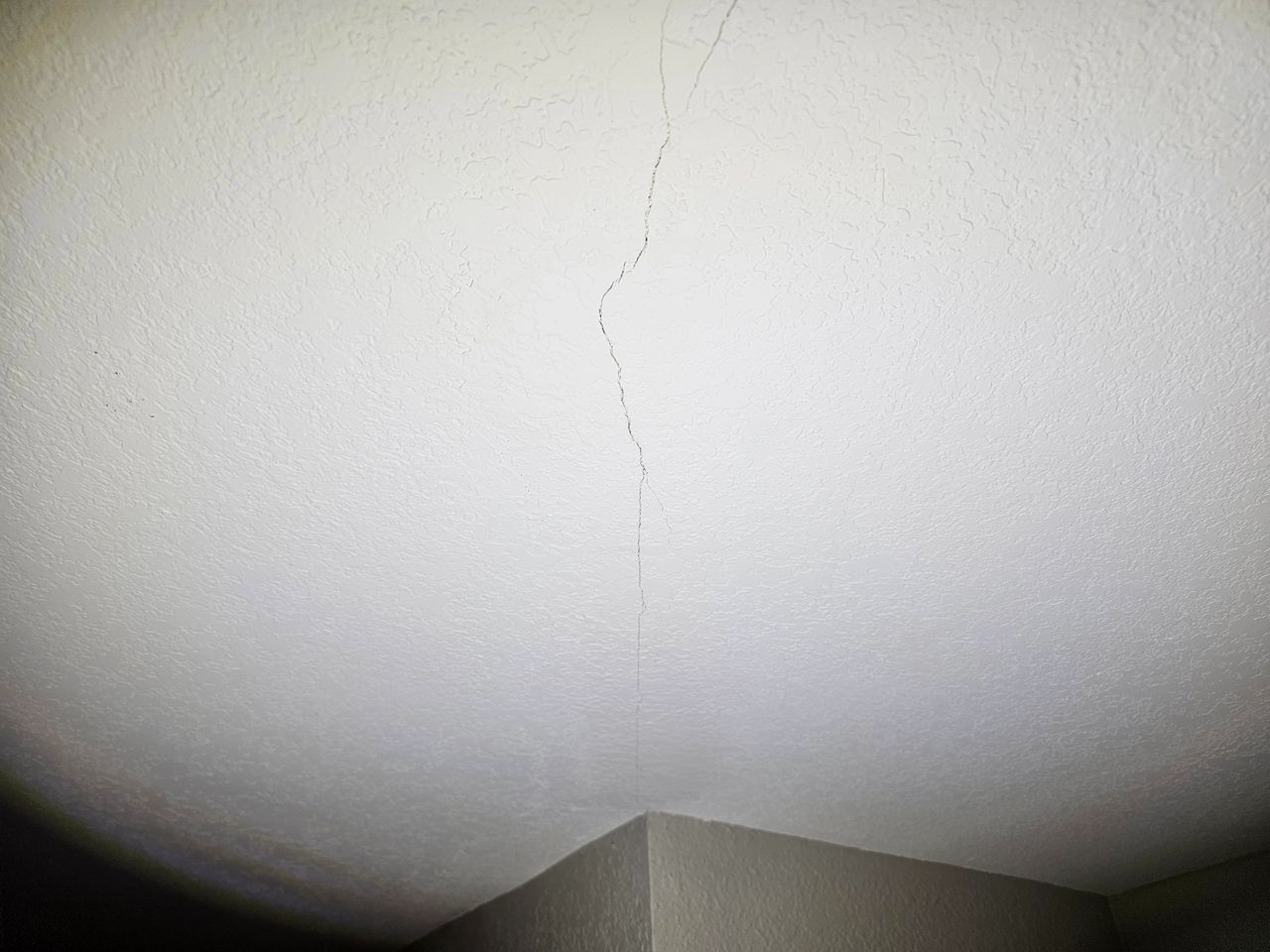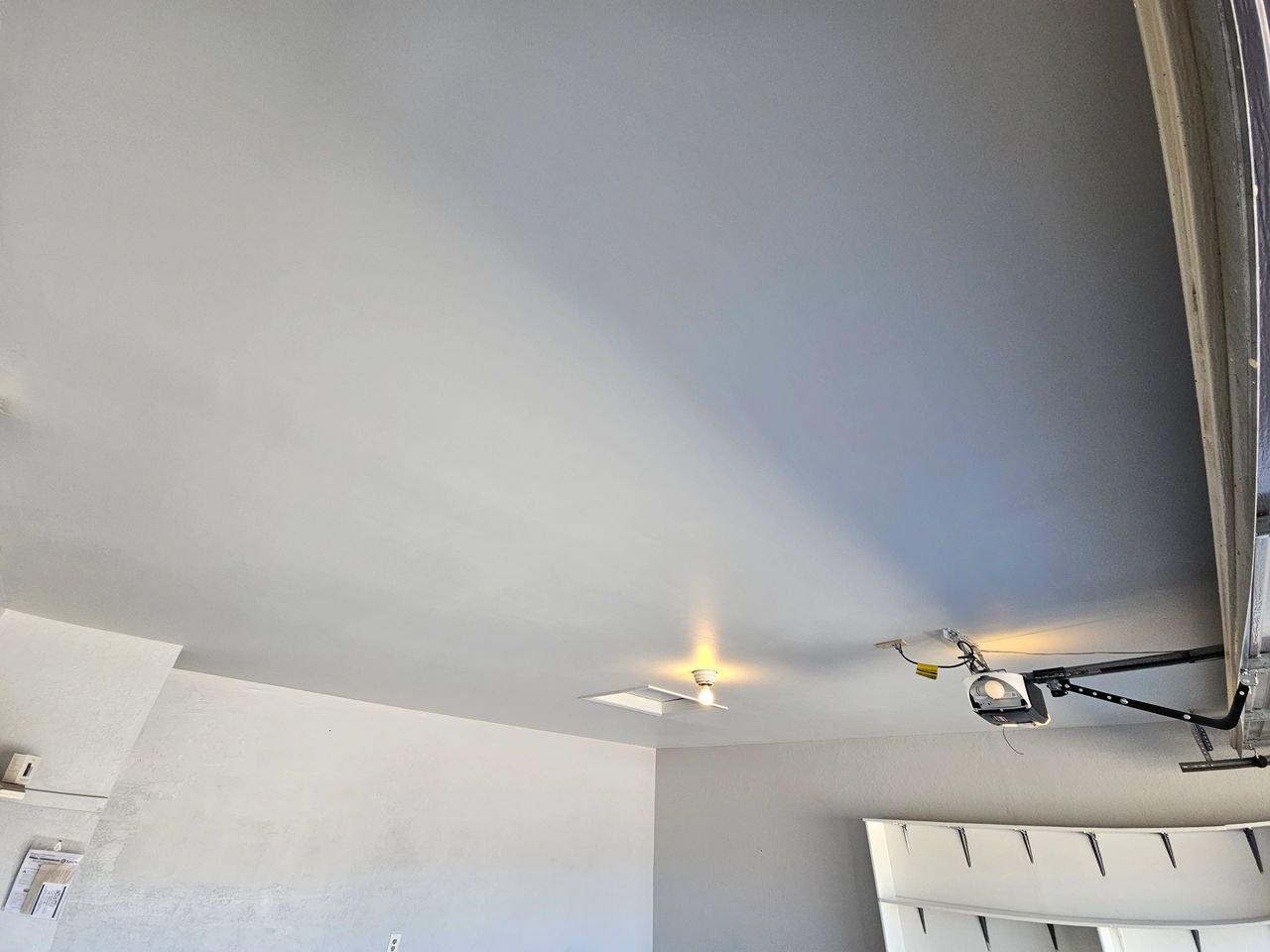Cracks in drywall and plaster are very common. They often appear over time due to stress or slight settling of the home. Contractors usually refer to them as “hairline cracks” because they’re thin and shallow. In most cases, they’re purely cosmetic and can be easily covered when repainting.
Where Do Drywall Cracks Usually Show Up?
Cracks tend to form where the structure experiences more stress. Common spots include:
- Corners of doors and windows (both inside and outside)
- Corners of wall openings
- Where two drywall panels meet (horizontal or vertical seams)
- High points in rooms with vaulted ceilings
- Garages walls and ceilings (due to moisture and temperature changes)
These areas are more prone to cracking, especially where drywall is taped and layered with mud. These joints are weaker than the center (or “field”) of the panel, making them more vulnerable.
Common Causes of Drywall Cracks
The main cause of cracks is stress in the structure. That stress can come from several sources:
Drying wood framing: As lumber dries, it can shrink, twist, or warp slightly, causing movement.
Structural movement:
- Wind loads from storms
- Home settling or soil shifting
- Expansive soils pushing upward
- Wet/dry seasonal cycles
- Temperature changes (especially in vacant or seasonal homes)
- Earthquakes or ground vibrations
- Truss uplift (causes ceiling-to-wall cracks)
Poor drywall installation:
- Too much or too little mud
- Missing tape
- Improper fastening
Removing textured ceilings (like popcorn): Builders may have used fewer coats of mud under textured ceilings to save money. Once the texture is removed, joints may crack more easily due to this shortcut.
When Is a Crack a Red Flag?
Most cracks are harmless. But be cautious if you see:
- Wide cracks
- Cracks running diagonally or at odd angles

These can indicate deeper structural problems — but not always. It depends on the situation. If you’re unsure, a basic structural check is a good idea.
How to Do a Quick Structural Check
Outside the home:
- Look for foundation cracks or bowing
- Check for cracks in siding or stucco (a few small ones are normal)
- See if the roof is sagging
- In basements, check for cracked or leaning walls
Inside the home:
- Are the floors level?
- Do doors rub against the floor?
- Are doors or windows sticking?
- Any sagging ceilings or bowed walls?
These issues may point to structural movement, which could be behind recurring drywall cracks.
Who Can Fix Drywall Cracks?
In most cases, a painter can handle it. For more noticeable cracks, a drywall contractor or a skilled handyman may be needed. Common repair tools include:
- Mesh tape or patch kits
- Drywall mud
- Caulking
Matching the existing wall texture can be tricky. If that’s a concern, hire someone experienced. Using mesh tape gives a stronger, longer-lasting result than just mud or spackle alone, which may crack again with seasonal expansion and contraction.


 Hi, I’m Home Inspector Dan — owner of Property Inspections Plus and a
Hi, I’m Home Inspector Dan — owner of Property Inspections Plus and a 



